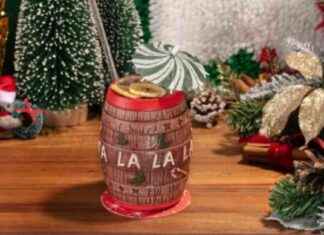Fish and chips is in theory quintessentially British, the working-class equivalent of aristocratic five o’clock tea – actually more like four o’clock. It is the way in which the stomachs of large families and construction workers are satiated (not like in Argentina, where with inflation and everything they gobble up a barbecue), what soccer fans eat at the entrance or exit of the stadiums of poor teams, such as fourth-tier Grimsby Town.
But in general, almost everything is more complicated than it seems, including the world of fish and chips. Because no matter how typical English the institution is, in reality the cod is mostly Icelandic or Norwegian, caught by Russian fishermen and fried in Ukrainian sunflower oil. An explosive combination in these times, not only because of the accumulation of calories, but because it is in the front line of the war in Europe, blockades, sanctions and supply problems.
Between the cost of raw materials and energy it is feared that many of the 10,500 stores across Britain will not survive the winter. And that in the past they emerged gracefully from the hardships of the two world wars, the Great Depression, multiple recessions and the financial crash of 2008. But this earthquake seems to be going to be one of the fat ones.
A small portion of fish and chips costs on average around 6.50 euros, except in posh restaurants in London, which also serve it for four and five times more. But that price is no longer realistic with inflation above 10% and 20% on the way. The question is how many of the regular customers are going to be able or willing to pay more, and how many are going to save on food to meet the looming electricity and gas bills. Because without diners there is no worthwhile business, least of all one that already had very small margins.
The typical fish and chip stall is a family operation, with Formica or plastic tables and a smell of grease, where cod is cooked with sunflower oil in stainless steel fryers and served in a paper cone, with chips sprinkled with salt and vinegar or curry sauce to taste of the consumer. Nothing to compete with Ferran Adrià or the Roca brothers, or win a Michelin star. Simple comfort food, a legacy of the Victorian era and the Industrial Revolution, high in calories and low on money, to stave off hunger.
The simplest thing in the world: cod, sunflower oil and potatoes, with the bad luck that the three ingredients have gone through the roof, as if they were oysters, eels and caviar. Courtesy (among other factors) of Putin, who for his part prefers smoked herring.
As half of the cod consumed in the United Kingdom is supplied by Russian fishermen operating in the icy waters of the Arctic and the North Atlantic, victims of the sanctions, British businesses have considered substituting it with skate, tilapia or hake. But it is very difficult to change a palate accustomed to the same thing for two centuries. Trendy restaurants can put whatever they want on their menus, and schools can give children whatever they like, but a fish and chips is a fish and chips, and it’s not a pig in a poke. And the same is happening with sunflower oil, whose shipments are blocked in the Black Sea and its price has tripled. Olive oil to lend a hand to Spanish exporters? Palm oil? Is not the same.
The fish and chip crisis is the crisis of a globalization gone haywire. But not even a nationalist solution will solve the problem, since the price of Brexit-style cod (that is, the one caught by the British in their waters or international waters) has also skyrocketed because of the cost of diesel, which is it takes almost all the profits to the point where it is not worth going out to fish.
Not only the British will suffer. Also the Tuscan town of Barga, many of whose inhabitants left for Scotland in the 1960s and 1970s, holds a fish and chip festival every summer. One would say that a spaghetti vongole is richer, but there is nothing written about tastes.








